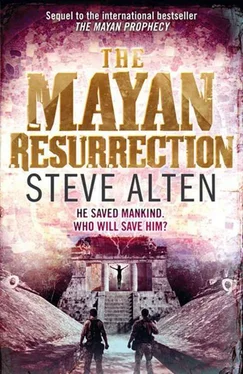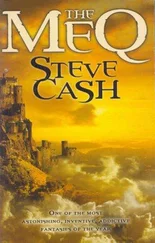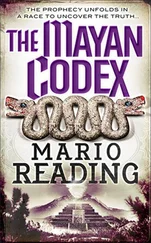Steve Alten - The Mayan Resurrection
Здесь есть возможность читать онлайн «Steve Alten - The Mayan Resurrection» весь текст электронной книги совершенно бесплатно (целиком полную версию без сокращений). В некоторых случаях можно слушать аудио, скачать через торрент в формате fb2 и присутствует краткое содержание. Жанр: Триллер, на английском языке. Описание произведения, (предисловие) а так же отзывы посетителей доступны на портале библиотеки ЛибКат.
- Название:The Mayan Resurrection
- Автор:
- Жанр:
- Год:неизвестен
- ISBN:нет данных
- Рейтинг книги:3 / 5. Голосов: 1
-
Избранное:Добавить в избранное
- Отзывы:
-
Ваша оценка:
- 60
- 1
- 2
- 3
- 4
- 5
The Mayan Resurrection: краткое содержание, описание и аннотация
Предлагаем к чтению аннотацию, описание, краткое содержание или предисловие (зависит от того, что написал сам автор книги «The Mayan Resurrection»). Если вы не нашли необходимую информацию о книге — напишите в комментариях, мы постараемся отыскать её.
The Mayan Resurrection — читать онлайн бесплатно полную книгу (весь текст) целиком
Ниже представлен текст книги, разбитый по страницам. Система сохранения места последней прочитанной страницы, позволяет с удобством читать онлайн бесплатно книгу «The Mayan Resurrection», без необходимости каждый раз заново искать на чём Вы остановились. Поставьте закладку, и сможете в любой момент перейти на страницу, на которой закончили чтение.
Интервал:
Закладка:
Refusing to honor his father’s orders of celibacy, fourteen-year-old Andre left home, seeking refuge with Gregor’s former commanding officer, Gilles de Rais, a man whose own extensive wealth and power was in direct contrast to the beliefs of the boy’s father.
The conversion of Gregor Rafelo to Albigensianism was a slap in the face to the Church. Within a week of Andre’s leaving home, his father was arrested by the Inquisition, under charges of heresy. He would spend the remaining thirteen years of his life in prison, the ideal environment for one seeking ‘perfection.’
As for Andre Rafelo, his destiny would follow a different path.
Gilles de Rais had accompanied Joan of Arc to Reims for the consecration of Charles VII, where he had been appointed Marshal of France. He remained by her side until her capture, at which time he retired to his estate in Brittany.
Gilles was a wealthy man, having inherited extensive domains from both his father and maternal grandfather. In addition, he had recently married Catherine de Thouars, a rich heiress. So well off was Gilles that he earned a reputation for keeping a more lavish court than the king.
Young Andre was taken in by Gilles and made a herald, but the boy’s personality grew on Gilles, who soon took the adolescent into his confidence.
In July of 1435, the Rais family secured a decree from the king that restrained Gilles from selling or mortgaging the rest of his properties. This financial setback turned the desperate Gilles to alchemy, eventually leading to his burgeoning interest in Satanism. Having lost much of his wealth, Gilles hoped to regain his riches through the knowledge and power of the Devil. Over the next five years, he and Andre would delve into witchcraft and the occult, worshiping Satan in ceremonies later termed the ‘Black Mass.’
At the Black Mass, the celebrants would don vestments similar to those of the Christian priests, except the chasuble had the addition of a goat’s figure, an animal associated with the Devil. Other parodies of the Church included crosses suspended upside down, inversions of Christian prayers, a blessing with filthy water, animal sacrifices, and the use of a naked woman’s abdomen as an altar. The Black Mass culminated in a ritualistic orgy, and occasionally-a human sacrifice.
It was Andre Rafelo, one of the cult’s high priests, who introduced this new blasphemy into the ceremony.
In September of 1440, Gilles de Rais was arrested and brought to trial in Nantes. There he was condemned for heresy and the abduction, torture, and murder of more than 140 children.
Andre Rafelo fled France for the Harz Mountains of Germany. There, he established secret covens, which formalized the supernatural traditions of Devil worship, witchcraft, and the ways of the Black Sabbat. Years later, he would travel to Africa, where he would learn the secrets of eating from the skulls of the dead to steal their souls.
Rafelo would father twelve children by three wives and live to see the births of seven grandchildren and two great grandchildren. After his death, his clan’s influence would spread overseas when his great grandson, Etienne Rafelo, set sail aboard a supply ship bound for New Spain (Mexico).
The history of the Central American people traces back long before the arrival of the first Europeans. The first ‘true’ Mexicans were seminomadic tribes who first appeared in Mesoamerica around 4000 b.c. Eventually they settled and became farmers, growing avocado, tomatoes, squash, and corn-a hybrid of wild grass.
Then, sometime around 1500 b. c, He arrived.
He was a long-faced Caucasian with flowing white beard and hair. Mesoamericans had never seen a white person before, let alone a bearded man (the Mayans being genetically incapable of growing facial hair). But the stranger was unique in other ways, for he possessed a wisdom far greater than anything the Indians had ever seen. The Caucasian elder quickly became their leader, and was soon revered as a god-king.
There are no records that tell us his name or his people’s name, but the natives of this low-lying region along the Gulf of Mexico eventually became known as the Olmec, the mother culture of all Mesoamerica. Under their teacher’s tutelage, the Olmec would unify the Gulf region, their achievements in astronomy, mathematics, and architecture influencing the Zapotec, Toltec, Mayan, and Aztec cultures that followed over the next two thousand years.
Almost overnight it seemed the jungle-dwelling Olmec went from being simple farmers to the architects of modern society. They established complex structures and extensive ceremonial centers. They were the first in Mesoamerica to record events. They originated the ancient ball game, and created great public works of art, which included the famous Olmec Heads-monolithic skulls fashioned from basalt, many of which weigh nearly thirty tons.
The bearded one’s presence soon became known throughout the region. To the Maya and Toltec he was the great teacher, Kukulcan, to the Aztecs he was Quetzalcoatl, the Plumed Serpent. And though he promised his people he would one day return, the god-king’s eventual departure around A.D. 1000 left Mesoamerica in utter disarray. Many peoples, like the Maya, turned to human sacrifice, their actions meant to appease Kukulcan and lure him back from the great beyond.
Five hundred years later, the first ‘official’ Caucasians would make their way into Central America from Europe, bringing with them tyranny and death, and something more – the Devil.
Hernan Cortez was a Spaniard who had earned his reputation as both explorer and Conquistador. In 1519 the governor of Cuba, Diego de Velazquez, commissioned Cortez and his forces to invade and conquer Montezuma’s Aztec empire. Armed with eleven ships and five hundred men, Cortez set sail for the Yucatan Peninsula, homeland of the Maya. Making his way north along the Gulf coastline, he founded the first Spanish settlement, La Villa Rica de Vera Cruz (modern-day Veracruz). As his men realized the daunting odds facing them, Cortez ordered his ships burned, fearing desertion. The vastly outnumbered Spanish would either win their battle or die trying.
What Cortez never suspected was that the outcome of the war would be decided by something else entirely-a case of mistaken identity.
When Montezuma, the Aztec leader, received word that a bearded white man had arrived from the sea, he believed Cortez to be none other than Quetzalcoatl, returning as he had promised from the grave. Ignoring a series of foreboding omens from his Nagual (witches), the Aztec leader sent emissaries to escort the Spaniard and his army directly into the capital city of Tenochtitlan, a near-impregnable island in the middle of Lake Texcoco. The stunned Spanish, impressed by the size of the city and its numerous temples and canals, were treated like gods. Feigning friendship, Cortez waited until the right moment, then ordered his army to attack, the bloody slaughter becoming the opening blow of an all-out war that would last more than two years.
Cortez eventually secured Mesoamerica for Spain, but it would take far longer for the Spanish priests to ‘conquer’ the peoples of Central America. To the Spanish, the Maya and Aztec were godless pagans who worshiped deities that could only be allies of the Devil. Kukulcan’s codices (and their warnings of impending doom) were burned, his followers converted to Christianity-under penalty of torture.
In reality, the dichotomy between good and evil, God and the Devil was completely alien to Mesoamerican Indians. Before the Spanish invasion, the closest divine being comparable to Satan was Tezcatilpoca, considered to be the god of night and patron of witches. The ‘mirror that smokes’ was the lord of sin and suffering and the inventor of fire, but he was not the Devil.
Читать дальшеИнтервал:
Закладка:
Похожие книги на «The Mayan Resurrection»
Представляем Вашему вниманию похожие книги на «The Mayan Resurrection» списком для выбора. Мы отобрали схожую по названию и смыслу литературу в надежде предоставить читателям больше вариантов отыскать новые, интересные, ещё непрочитанные произведения.
Обсуждение, отзывы о книге «The Mayan Resurrection» и просто собственные мнения читателей. Оставьте ваши комментарии, напишите, что Вы думаете о произведении, его смысле или главных героях. Укажите что конкретно понравилось, а что нет, и почему Вы так считаете.












